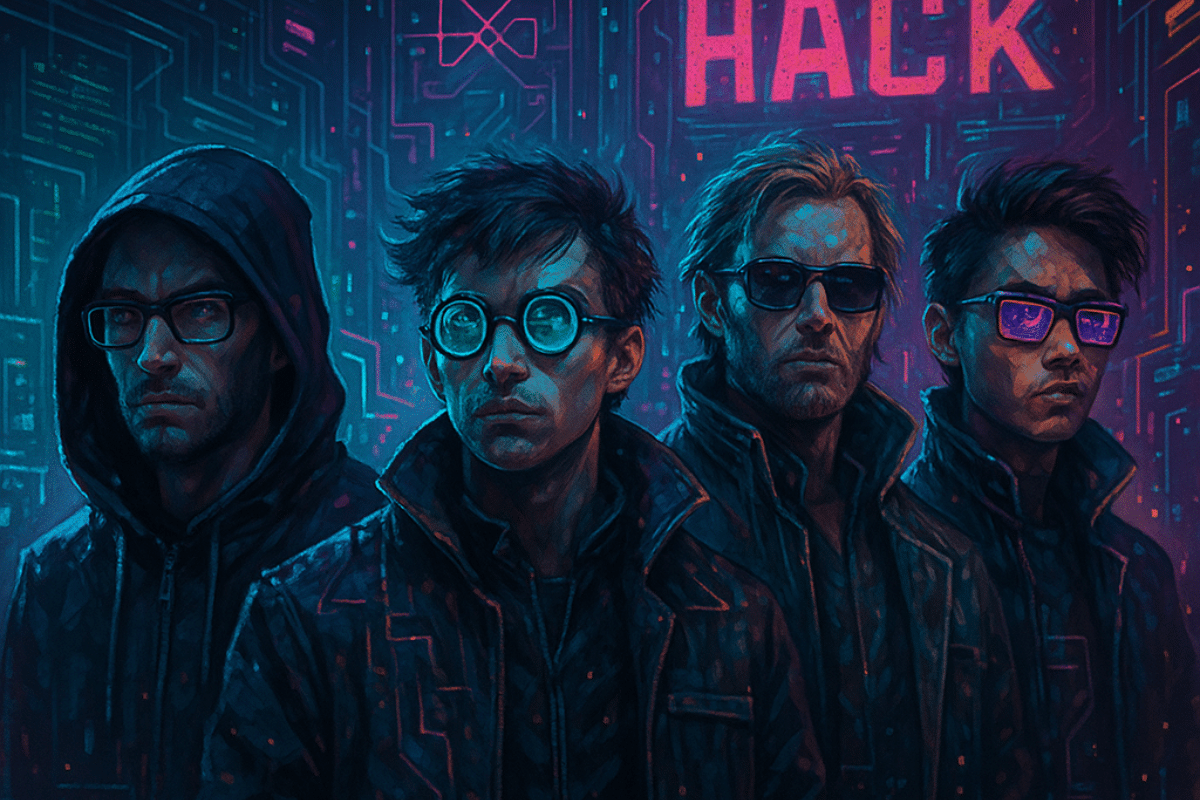
The most brilliant hackers in history
When you hear the word “hacker,” the public imagination tends to swing between two extremes: the criminal in a black hoodie and the rebellious tech prodigy who casually breaks into corporate systems. But the truth is far more nuanced. A hacker is, at their core, a builder and deconstructor — a curious mind capable of thinking outside the box to explore the boundaries of digital systems.
Throughout the history of computing, there have been hackers who broke the law, others who bent it, and some who helped define it. Some destroyed, others created. But all of them, in one way or another, left a lasting impact on the technological world.
Kevin Mitnick: turning social engineering into an art form
To many, Kevin Mitnick is the iconic face of hacking. In the 1980s and 90s, he proved that the weakest link in any system isn’t the code — it’s the human being. Through social engineering techniques, Mitnick gained access to corporate networks, confidential phone numbers, proprietary software, and source code from tech giants like Motorola and Nokia.
His approach was as brilliant as it was unconventional: he didn’t rely solely on technical vulnerabilities, but manipulated people, posed as employees, and impersonated technicians to obtain credentials. After serving five years in prison, he reemerged as a cybersecurity expert, raising awareness across industries about the dangers of human-targeted attacks.
Adrian Lamo: the homeless hacker who broke in to fix
Adrian Lamo was an unconventional figure. Without a permanent home, he moved between internet cafés and public libraries while managing to infiltrate the systems of Microsoft, Yahoo!, and The New York Times. What made him unique wasn’t just his technical prowess but his personal code of ethics.
Lamo often patched the vulnerabilities he discovered, alerting companies in an attempt to balance transgression with responsibility. His legacy became more controversial after he reported Chelsea Manning in the wake of the classified leaks, but his influence on hacker culture remains significant.
Gary McKinnon: chasing UFOs through military networks
British hacker Gary McKinnon became infamous for carrying out the largest known breach of U.S. military networks. His motive? Searching for evidence of UFOs. Between 2001 and 2002, McKinnon infiltrated dozens of NASA and Department of Defense systems, exploiting weak passwords and unprotected machines.
What’s most striking isn’t the scale of the breach, but the simplicity of his methods: no malware, no advanced exploits — just open RDP connections and default credentials. His case sparked international tension and revealed how even the most secure systems can fall to the simplest oversights. McKinnon spent years fighting extradition, becoming a symbol of government vulnerability in the digital age.
Julian Assange: code as a political weapon
Long before founding WikiLeaks, Julian Assange was already known in the hacker community as “Mendax”. In the 1980s and 90s, with the collective International Subversives, he breached the systems of corporations, universities, and government agencies. His style wasn’t just technical — it was deeply political: he believed that access to information was a form of freedom.
With WikiLeaks, Assange took the hacker ethos to its extreme, turning hacking from a tool of exploration into a tool of exposure. Whether you see him as a hero of transparency or a dangerous provocateur, it’s undeniable that he reshaped the intersection of information, power, and technology.
George Hotz (geohot): packing as Performance
One of the most brilliant 21st-century hackers is George Hotz, aka “geohot.” At just 17, he became the first to unlock an iPhone, allowing it to run on carriers beyond AT&T. A few years later, he hacked Sony’s PlayStation 3, triggering a high-profile legal battle.
Hotz has always seen hacking as an act of curiosity, intellectual freedom, and technical challenge. His talent later led him to found Comma.ai, a company developing open-source autonomous driving systems — proving that a hacker can evolve into a tech entrepreneur without losing that rebellious spark.
All of these hackers — from different eras, with different motives and methods — share one thing in common: they think differently. They see systems not just for what they are, but for what they could be if reimagined. They don’t stop at interfaces — they dig into protocols. They don’t accept the limits defined by documentation — they rewrite the rules.
For better or worse, they’ve forced the world to rethink security, ethics, and power in the digital age. And for that, they deserve a place not just in the history of hacking, but in the broader history of computing.








